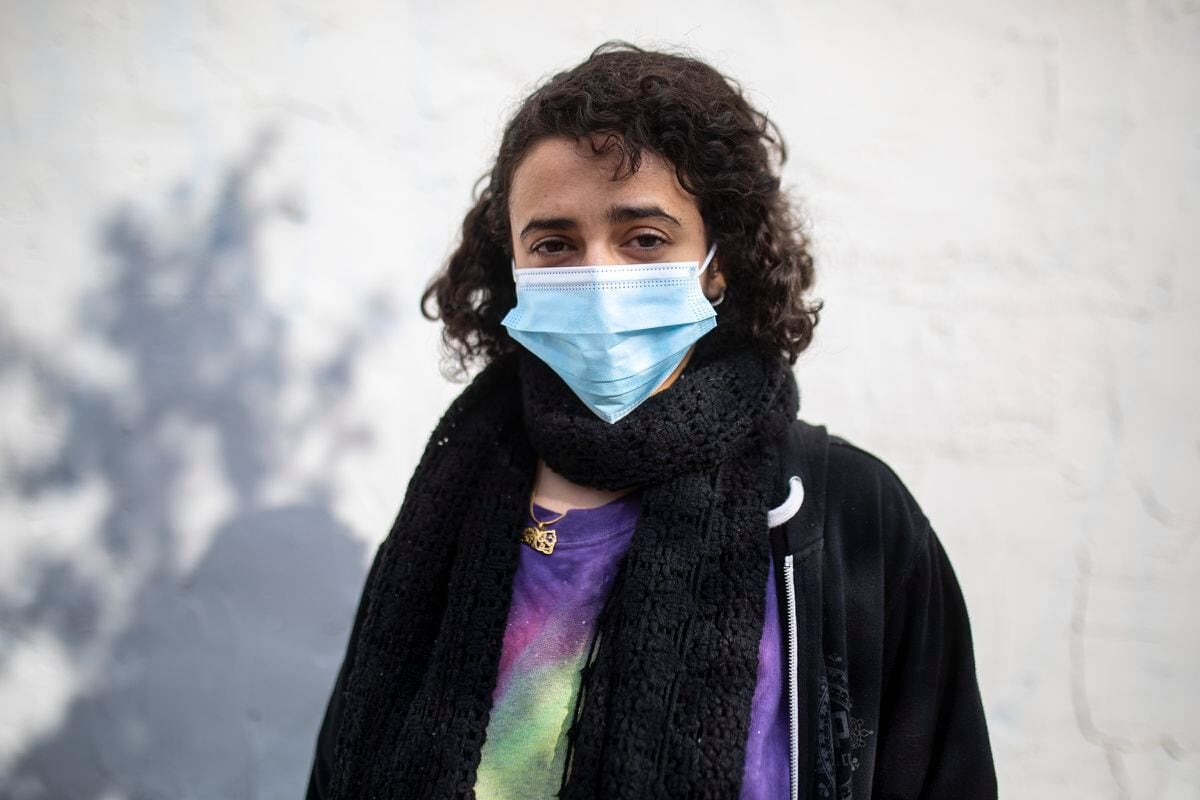
Nour Qutyan used her $600 federal stimulus check to pay her share of the rent she splits with two roommates in South Philadelphia: $588.
“The $12 left over feels like a slap in the face for a low-income person like me,” said Qutyan, 28, who is surviving on just a few hours of work a month as a bartender in Brewerytown. “At the same time, I’m lucky to have gotten the money. Something is better than nothing.”
As it claims lives, the pandemic also continues to wreck the economy, laying low Americans in or near poverty. For them, even $600 stimulus checks, released this month, make a difference.
But when a person lives in a constant state of need, it’s often difficult to decide which hole to fill, or which fire to put out.
“I really couldn’t budget the money or save it,” said Robin Bechtel, 54, who calls herself a “very low income” woman in Honey Brook, Chester County.
Unable to work at her job as a fast-food cook because she contracted the coronavirus as she’s been battling breast cancer, Bechtel, the mother of three, used her $600 for food and propane. Her heat had been cut off for two weeks, and she often relies on the Honey Brook Food Pantry for help.
“I don’t waste money,” she said. “I’ve learned over the years that you pay for food, heat, and your car, because you need it to get to work in Chester County.”
Bechtel’s car, she said, recently broke down. She added, “So far, it’s been a great year.”
Overall, people in poverty are likely using their checks to simply sustain their families, said sociologist Judith Levine, director of the Public Policy Lab at Temple University: “Rent, food, medicine — those are the top things people are forced to spend that money on.”
In Philadelphia, many low-income people work in restaurants, particularly hard hit during the pandemic.
“It’s absolutely devastating,” said Sam Jones, director of the Pennsylvania chapter of the Restaurant Opportunity Center, a national nonprofit that advocates for restaurant workers.
“They’re behind on rent and utility payments, they need food and have medical issues,” he said. “The $600 is woefully inadequate.”
It’s too soon for scholars to have studied how those in poverty have used their $600 stimulus checks.
But in a study of the way Americans spent their first round of pandemic-related stimulus checks in April — many of those around $1,200 each — scholars from the University of Wisconsin and the University of Virginia showed that people spent a great deal of their allotment on food, helping to stave off hunger.
A June study by the U.S. Census Bureau showed that 87.6% of adults in households with incomes of $25,000 or less said they’d use their stimulus payments to meet immediate expenses.
On the other hand, adults in households with incomes between $75,000 and $99,999 were more likely to use their stimulus payments to pay off debt or to add to savings.
For decades, many low-income Americans have been denigrated as do-nothings willing to sponge off the federal government, unable to responsibly handle whatever charity they get.
“People have stereotypes about those in poverty,” said Laura Napolitano, a sociologist of the American family at Rutgers University-Camden. “And, anecdotally, you’ll hear about a few people who spend money in the wrong way.”
Napolitano and other scholars point to the many times Republican governors and the Trump administration have tried to impose work requirements on Medicaid benefits, which studies show leads to lower enrollment but no change in employment, as Vox reported. The administration has also pushed four times to limit food stamp benefits and to impose more stringent work even as the economy collapses, which experts say would lead to 700,000 people to lose their benefits.
But, Napolitano stressed, “research shows that, generally, people aren’t frivolous.”
To understand how quite a few low-income Americans handle influxes of federal money successfully, one need only look at the Earned Income Tax Credit program, she added.
The EITC is a refundable tax credit available to low-income families who have income from work. According to research presented by the Economic Policy Institute, the program “dramatically reduces child poverty, encourages single mothers to participate in the formal economy, and has important positive effects on a range of health, educational, and child developmental outcomes.”
The average EITC amount received per tax-filer was $2,476 during the 2019 tax year, federal figures show.
For low-income workers, that’s something like a lottery win, according to Kathryn Edin, Princeton University scholar and a leading poverty researcher.
Yet rather than spend wildly, EITC recipients Edin has studied showed they learned to build up emergency savings with the conferred dollars.
For people in poverty, no solution is perfect. And not everyone — including middle-class Americans — are capable of using money that’s given to them in the “right way,” scholars say.
Lisa, a 33-year-old college-educated West Philadelphia woman who grew up middle class but now is low-income, asked that her last name not be used because she’s sending out resumes for work.
She said, “I absolutely know people who are misusing the $600 checks. They’re taking extraneous trips they don’t need, buying novelty items or unnecessary pleasures like clothes.”
Still, Lisa said, most friends are being responsible. As for herself, she said, “It’s incredibly hard to hold back on buying. I need a humidifier and a convection oven. But I put 75% of the stimulus check toward rent and my phone bill. There’s about $100 left over for savings.
“Because I’m mostly out of work, I have to prioritize survival.”
"low" - Google News
January 15, 2021 at 05:05PM
https://ift.tt/3slVXAq
How low-income people are spending their $600 pandemic stimulus payments - The Philadelphia Inquirer
"low" - Google News
https://ift.tt/2z1WHDx
Bagikan Berita Ini














0 Response to "How low-income people are spending their $600 pandemic stimulus payments - The Philadelphia Inquirer"
Post a Comment